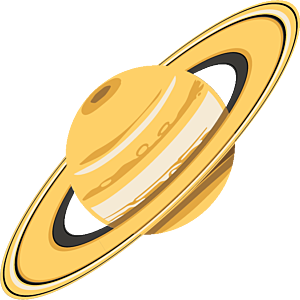The Downlink • Jul 02, 2021
Seeing Ourselves in Space
Space Snapshot

Saturn's rings inspire awe and fascination. They are also a reminder of the cosmic moment in which we live, since they are just a temporary feature of the giant planet. For all these reasons, we’ve collected our favorite images of Saturn’s spectacular rings. The collection includes this distant planetary selfie: Earth, which is 1.4 billion kilometers (900 million miles) away, appears as a blue dot at center right. Image credit: NASA/JPL/Space Science Institute.
You love space, now take action
This weekly newsletter is your toolkit to learn more about space, share information with your friends and family, and take direct action to support exploration. Anyone can subscribe at planetary.org/connect to receive it as a weekly email.
Mission Briefings


China has released footage from Zhurong’s descent to Mars back in May and yes, it’s awesome. On June 27, the China National Space Administration (CNSA) published video and sounds of the rover touching down on the Red Planet. The video features Zhurong’s parachutes deploying as well as the thrilling moment of landing. Zhurong is currently exploring Utopia Planitia. Pictured: A section of a panorama taken by Zhurong showing parts of the rover, its tracks, and the distant landing platform. Image credit: CNSA/PEC.

NASA’s Near-Earth Object Wide-field Infrared Survey Explorer (NEOWISE) just got a little more time to hunt for asteroids. NASA just granted NEOWISE a two-year extension on its mission, meaning it can search the solar system for even more near-Earth objects (NEOs). So far, NEOWISE has estimated the size of 1,850 NEOs, which is important for planetary defense here on Earth. Its successor, NEO Surveyor, was recently approved for a 2026 launch.

An uncrewed Russian Progress 78 resupply ship is headed to the International Space Station. The ship launched on Wednesday, June 30 from Baikonur Cosmodrome in Kazakhstan, carrying 3,600 pounds of food, fuel, and supplies for the Expedition 65 crew. Progress 78 is expected to dock with the ISS on July 1.

On July 20, aviation legend Wally Funk will finally get to go to space. Jeff Bezos announced on Instagram that Funk will fly aboard New Shepard’s first crewed flight as an “honored guest.” Funk was one of the “Mercury 13,” a group of women pilots enrolled in the privately funded Women in Space program. Despite the group’s rigorous training and impressive qualifications, the program was ultimately canceled; NASA, which didn’t accept women astronauts, rejected Funk’s application three times.
From The Planetary Society


Can we look beyond ourselves when looking for life beyond Earth? Some scientists argue that the search for life should not focus only on life as we know it (the kind of life that exists here on Earth). But how? This week’s Planetary Radio features University of Glasgow chemist Lee Cronin, whose "assembly theory" looks at complex molecules as the key to identifying life as we know it, and as we don’t. By the end of the interview you’ll never think of life the same way again. Pictured: The surface sampler arm on NASA’s Viking 1 lander digs for samples on Mars in an early attempt to find extraterrestrial life. Image credit: NASA/JPL/Bill Dunford.

You know the planets, you know the moons, but have you met the asteroids? In collaboration with Asteroid Day, we’re bringing you an introduction to some of the solar system’s lesser-known (but nonetheless fascinating) little worlds. Watch and share our “Meet the Asteroids” video to get better acquainted with five asteroids that scientists and asteroid hunters alike are keeping a close eye on. And if you want to learn even more, head over to Asteroid Day’s official website for lots of great asteroid content from their June 30 live virtual event.
What's Up

Super-bright Venus and reddish Mars shine low to the western horizon after sunset. Around midnight, Jupiter and Saturn (a bit higher up) rise in the east. Learn more at planetary.org/night-sky.
Asteroids Ain’t Got Nothin’ On Us

We’re extraordinarily proud to report that our members and supporters have raised more than $64,000 in support of asteroid hunters through our Shoemaker NEO Grant program, exceeding our goal for this campaign. There’s still time to chip in and help defend our planet from asteroid impacts! You can also check out the planetary defense merch (like the sticker pictured here) in our online store. Every purchase helps us do more to stay unextinct.
Wow of the Week

In a sort of meta-selfie, a navigation camera aboard NASA’s Perseverance rover captured this image of the rover’s robotic arm as the arm’s camera created a selfie of the rover. Sound complicated? Well, it is. In a new video from NASA, Vandi Verma, Perseverance’s chief engineer for robotic operations, breaks down the surprisingly complex process of taking a selfie on another world. Thanks to the first-ever Mars microphones, you can also hear the musical sounds of the robotic arm maneuvering as the rover snaps images of itself. Image credit: NASA/JPL-Caltech/MSSS.


 Explore Worlds
Explore Worlds Find Life
Find Life Defend Earth
Defend Earth


